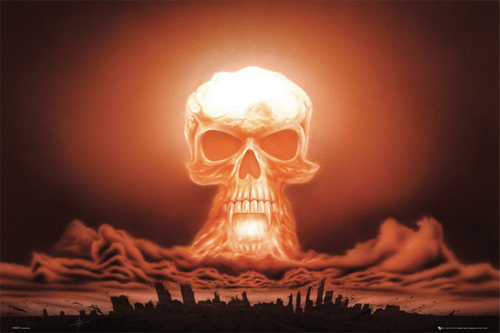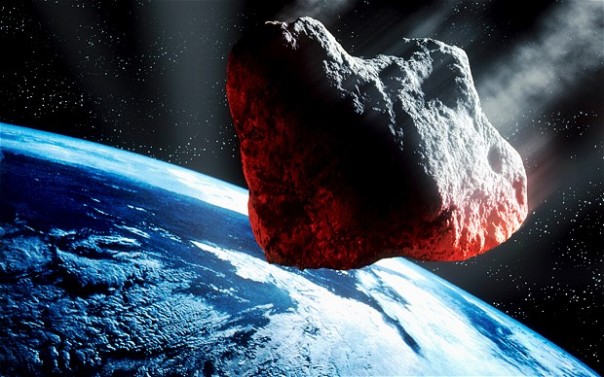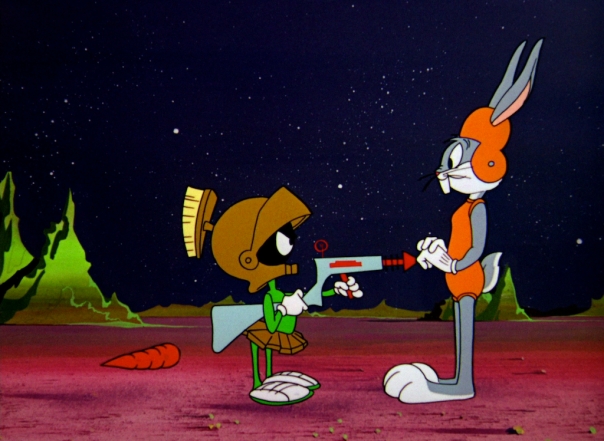This week we are joined again by Nick Raphael to discuss doomsday scenarios – ways in which our world (or at least the human race) may end. We’ve picked a few of our favourites, from meteors to killer robots to meme epidemics, and we review their feasibility (and entertainment value) in light of what we know about how the world works. Some of them make great movie ideas; some of them are scary but statistically very unlikely; and there are one or two are plausible enough to get us a little worried.
In the spirit of (pseudo) scientific enquiry, we have given each scenario a “rating” – a combination of likelihood (how likely it is to happen in the near future) and risk (how catastrophic would it be for us).
Download or listen to the podcast below and scroll down to see a summary of our ratings.
Nuclear War
Sure we have enough bombs to “kill us all”, but in any real conflict there would be many millions of survivors globally. And even under the severest of nuclear winters with its attendant disruption of the food chain, you could assume that some communities would persist and survive under the harshest of conditions (as some of them do today) to seed a new generation. 2/10
Eco-pocalypse
We rely on a healthy biosphere for optimal existence, but even a highly damaged biosphere is likely to be habitable by humans2. In fact, the resilience of networks in the natural world and our own adaptability are part of the problem – we don’t appreciate how much damage we are doing because we always seem to ‘get by’. There are excellent ethical and practical reasons why we should limit our ecological footprint, but the claim that we are driving ourselves to extinction is a dubious one. 2/10
Reversal of the Earth’s Magnetic Field
Reversals and disruptions of the Earth’s magnetic field seem to happen quite regularly, every half a million years on average. If it happened again, we might expect global disruption – even catastrophe – but it’s unlikely to be the full-blown extinction event3. 1/10
Meteor strike
It’s thought that a meteor is what did for the dinosaurs – what would it do to us? A really large meteor would irreversibly change our climate and block the sun’s rays from much of the Earth for a long time. Nothing larger than a chicken survived the last big strike 65 million years ago, and the Gentlemen Scientists don’t like our chances with this one. 5/10
Black hole passes by the Solar System
Planets go flying in every direction, including ours. Sounds pretty bad, right? We’re not sure how likely this is, but it feels like it is unlikely. Undoubtedly a full-blown extinction for us if it does, though (unless we have time to prepare?). 1/10
Gamma Ray burst from space
Unimaginably powerful beams of energy travel through space on a regular basis – we can see them. If one of them hit us, it could burn off the ozone layer, expose us to high doses of radiation and destroy the food chain. Statistically very unlikely, but we’d never see it coming and we’d be screwed. 3/10
Extraterrestrial life wreaks havoc
Some people believe that life on Earth may have come from another planet, and it might happen again. It’s logically possible that lifeforms (microscopic life, viruses etc.) may be relayed to Earth, and that such a “pan-spermic” event could wreak havoc. However, if there is one thing about our biosphere it is highly competitive, and any “alien” life is unlikely to be adapted to our environment, let along superior in any important way (although it is possible – think of introduced species). A very unlikely scenario but risk difficult to assess. 1/10
Superbugs
A mass epidemic of an engineered ‘superbug’ would be super-scary, and they might not be too hard to make. But here is where the raw material of natural selection – the natural variability of our population – is our defense. In even the worst pandemic, some people survive, and the genes that lead to their lowered susceptibility are strengthened over time. Even a zombie virus couldn’t achieve a coverage of one hundred percent, and the survivors would carry the flag. 2/10
Grey Goo – Nanotechnology gone wild
The idea of grey goo seems fanciful – tiny little nano-robots that can replicate themselves take over the world, munching their way through everything. It’s possible in principle (we think) and some people take it semi-seriously, but we think any such self-replicating technology would end up mired in its own waste and would be too easy to stop. 1/10
Runaway Artificial Intelligence
Will we reach a moment of technological singularity, when we build a super-human intelligence – which might decide to (or inadvertently) eliminate us? Even a super-intelligent machine will need raw materials and energy, and none of them would be evolved for our biosphere the way we are (not to mention our co-evolution with the organisms that help us live). And is it even possible for us to build machines that can think to that level? Too many assumptions needed for this scenario. 1/10
Killer Meme Epidemic
Some Jains in eastern India starve themselves to death. Could a suicidal meme such as this ever spread through the population, causing us to override our most ancient biological instincts and exterminate ourselves? Sounds far-fetched, but scary and difficult to rule out exactly because we don’t really understand the principles of cultural transmission. Again, natural variation protects us – a killer meme might infect everyone but there might be some who are immune (eg. the mentally deficient or mentally ill). 3/10
Mass Infertility
Thought experiment – some kind of catastrophe instantaneously destroy every human egg in every female on Earth. That’d the end of the human race, since women don’t create eggs but are born with them. Sexual reproduction as a modus operandi might have a weak link somewhere, but we can’t think of how you could “break” it for every individual in our global population. 0/10
2In the Asimov story 2430 A.D., there are 15 trillion humans, the Earth is covered with concrete and there are no other mammals.
3Magnetic field disruption was in the plot of the (terrible) film called 2012.
4Correction: the dinosaurs were around for 150 million years, not 65 millions years.
5A large meteor hit the atmosphere above the Russian city of Chelyabinsk in February 2013.
6Correction: we said “AIDS virus” and “HIV virus” which are both wrong. It is of course the Human Immunodeficiency Virus (HIV)
7The Jain ritual of suicide by starvation is called Sallekhana
8The weird urge to jump off a bridge, explained
9Children of Men depicts a future where women are infertile and humanity is living through its last ever generation.




 A Gentleman Scientist’s speculative (and possibly incorrect) rendering of space around a black hole leading to another isolated “universe”
A Gentleman Scientist’s speculative (and possibly incorrect) rendering of space around a black hole leading to another isolated “universe”